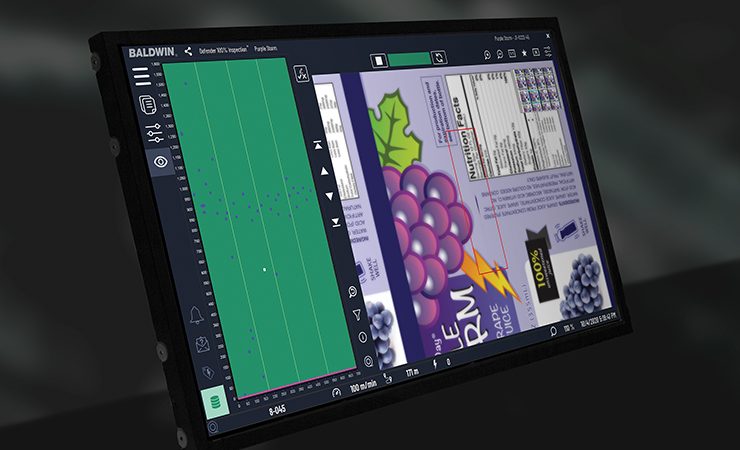Baldwin Vision Systems has launched Defender, a suite of data-connected technologies to identify, track and remove print defects.
Specifically designed for wide web packaging substrates, Defender 100% Inspection is the foundation of the system, whilst Defender Data Central and Defender Waste Manager combine to function as a defect detection and tracking workflow.
Specifically, Defender 100% Inspection utilises advanced defect detection algorithms to quickly classify each defect, driving better print quality decisions. Unique self-learning algorithms monitor the capabilities of the press and automatically apply optimum inspection tolerances to each job. Job settings can be modified and saved, with manual finetuning facilitating a reduction in false or nuisance alarms by adjusting sensitivity levels for multiple defect types and different substrates. Defender Data Central uses visual maps of each inspected roll, allowing quality control operators to analyse defect distribution, count and type. Out-of-tolerance areas are identified for removal, and job-based quality reports can be generated. Defender Waste Manager interfaces with rewinding, slitting and sheeting equipment to automatically control when they stop/reject. This allows for fast and easy removal of defective material. Defect location data speeds up the converting process by allowing operators to fast-forward to the exact location of the defect within a roll.
The combination of these technologies enables printers to ‘easily deliver defect-free, perfect print quality’ to brand owners and print customers, according to the company. Empowered with valuable production data and detailed print quality reports, printers can improve their processes and put more work through the press, reducing the need for additional presses or press time.
John Cusack, business development specialist at Baldwin Vision Systems, explained, ‘Print buyers are increasingly requiring 100% print inspection along with detailed print quality reports. The Defender technologies enable printers and converters to monitor and enhance their processes and directly improve their bottom lines. On top of that, knowing where defects are and having the tools to easily remove them greatly reduces the risk of returns, litigation, lost business, and a damaged reputation.
‘The Defender workflow gives printers the ability to meet brand owners’ expectations, retain current customers, pursue new markets and win new business with a clear competitive advantage.’
Mr Cusack continued, ‘Our advanced, data-connected workflow gives you the ability to make strategic decisions based on facts. With the tracking workflow, it’s possible to eliminate all defects from outgoing product, providing perfect quality to brand owners. It is also possible to make tactical decisions about which defects do and do not need to be removed, based on your customers’ specifications. This ensures maximum yield and maximum profitability, job after job.’




